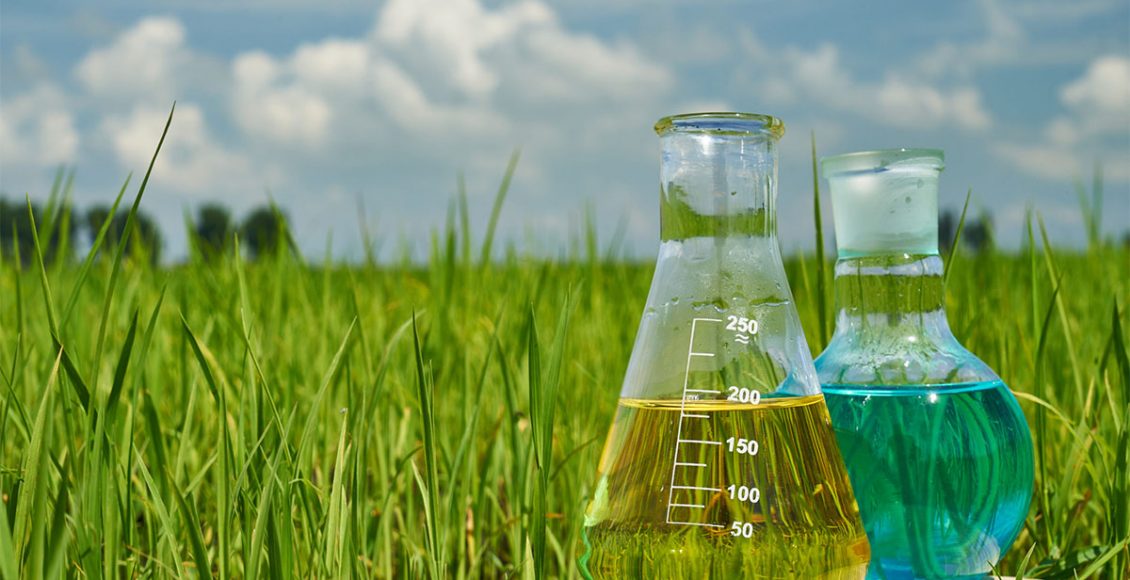
Opportunity for India becoming a global agro-chemical manufacturing hub
Indian agro-chemical industry is currently valued at USD 5.74 billion, of which domestic market accounts for USD 2.74 billion and exports account for USD 3 billion. At present, India ranks fourth in terms of agro-chemical production after US, Japan and China. The industry is growing at the CAGR of 8-10% and will reach USD 8.1 billion by 2025. Some of the major trends driving this growth includes, increasing focus on digitization, evolving go-to-market models like e-commerce, direct selling to FPOs, and increased use of specialty products such as bio fertilizers and biopesticides. However, the industry is still facing some challenges such as lack of awareness among farmers, low and non-scientific usage of agro-chemicals, high dependence on generic molecules, complex and regularly changing regulatory processes e.g. recent changes in Pesticide Management Bill in India.
India has a great opportunity to make itself a global manufacturing hub for agro-chemicals leveraging its talent pool, low-cost manufacturing, better price realization globally and strong presence in manufacturing of generic technicals and formulations. Indian companies have been focusing on exports owing to seasonal domestic demand and huge potential in foreign markets. Indian Government is promoting cluster-based development that is expected to boost competitiveness in exports and domestic sales by reducing manufacturing and logistics cost. Products worth USD 4.2 billion globally are expected to go off patent by 2023 that will present opportunity for manufacturing 26 active ingredients as generic molecules. There is a fall in manufacturing capacity and exports of agrochemicals from China due to stringent environmental norms, crackdown on the polluting chemical industry, impending duties from US on Chinese products and global effort to reduce dependency on China for inputs and finished products. These provides India to become a leading global manufacturing hub of agrochemicals.
Many large companies have already started developing backward integration for key products by setting up inhouse manufacturing facilities for key ingredients and enhancing their manufacturing capabilities. Indian agrochemical companies have already started taking steps in that direction by expanding their distribution channels (eg. UPL is setting up USD 53 million unit in Gujarat, Indofil too expanded its unit in Gujarat) , creating brands, innovating process technology for off-patent molecules, developing better product mix (more combination products, eco-friendly formulations), becoming aggressive about registering off-patent products, and developing relationship with distributors to push volumes at more competitive prices than innovators. Many companies have adopted the strategy of mergers and acquisitions, collaborations and joint ventures that makes them less dependent on outsourced suppliers. Collaborating with MNCs by manufacturing and marketing their products can also open up a huge potential for domestic agro-chemical companies.
Looking at the overall manufacturing sector, the proactive and business friendly environment in India is an added advantage. Many global players have penetrated Indian market through mergers and acquisitions route. Highlighting the case in point for Japanese companies which have shown great passion for investing in the evolving Indian agrochemical industry. Mitsui and Nisso jointly have acquired 56% Stake in Bharat Insecticides Limited, in 2016, Sumitomo Chemical acquired the majority interest in Excel Crop Care Ltd., in 2018, Sumitomo Corporation and its Summit Agro founded a subsidiary Sumisho Agro in India, which engages in agrochemicals trading business in the country, Nissan Chemical has longstanding partnerships with Indian firms such as Insecticides India and Dhanunka and many more.
However, there are some challenges in Indian agro-chemical industry which needs to be addressed. India heavily relies on China for raw materials and intermediates supply to manufacture agro-chemicals. Further to this, Indian agro-chemical industry lacks independent research and development capacities. Indian agro-chemical sector generally spends 1-2 % of their turnover on R&D whereas it is around 5-10% in developed countries. Strengthening on R&D requires high capital investments and long gestation period of 3-5 years. This has led India’s agrochemical industry to focus more on generics rather than developing new molecules.
For India to be a global manufacturing hub for agro-chemicals, the industry needs to focus on increasing investments in R&D, collaboration with R&D labs and research institutions, adding to manufacturing capacities. Government is planning to introduce Production linked incentives (PLI) scheme to encourage new manufacturing projects. This is one of the key innovative schemes that is both WTO compliant as it is not subsidizing exports and exports -oriented at the same time. The PLI scheme is structured in such a way that provides a production threshold over which the incentives will kick-in, indirectly pushing the companies under PLI to export the excess production (beyond the domestic demand). The PLI scheme has worked well for pharma, mobile manufacturing and is expected to provide right incentives to Indian companies and will help India become one of the leading manufacturing hubs for global agrochemical industry.
Policy makers need to focus on incentivizing the manufacturing of finished products and intermediates along with ease of doing business. There is also a need to tone down the regulatory practices making it more stable through minimizing shocks and surprises, invest in on-ground inspection and execution capabilities. Focus on R&D and developing new products will also add to India’s intellectual property that will be helpful for companies in longer run. The current scenario is relevant for Indian agrochemical sector to grow and be a global manufacturing hub. It will be interesting to see the extent at which the industry can utilize the advantages and evolve accordingly, which will decide its future.
Author

Connect with Author at: E-mail agribusiness@sathguru.com
 Grow Beyond
Grow Beyond 

